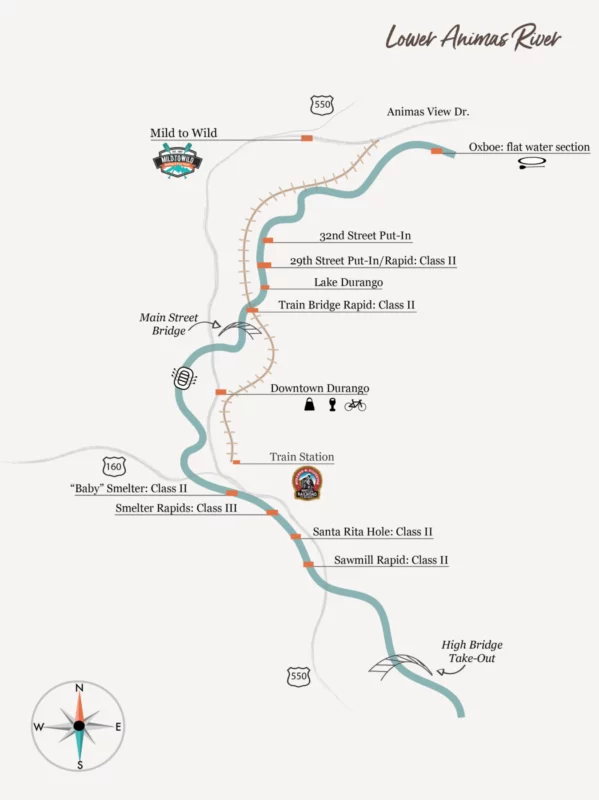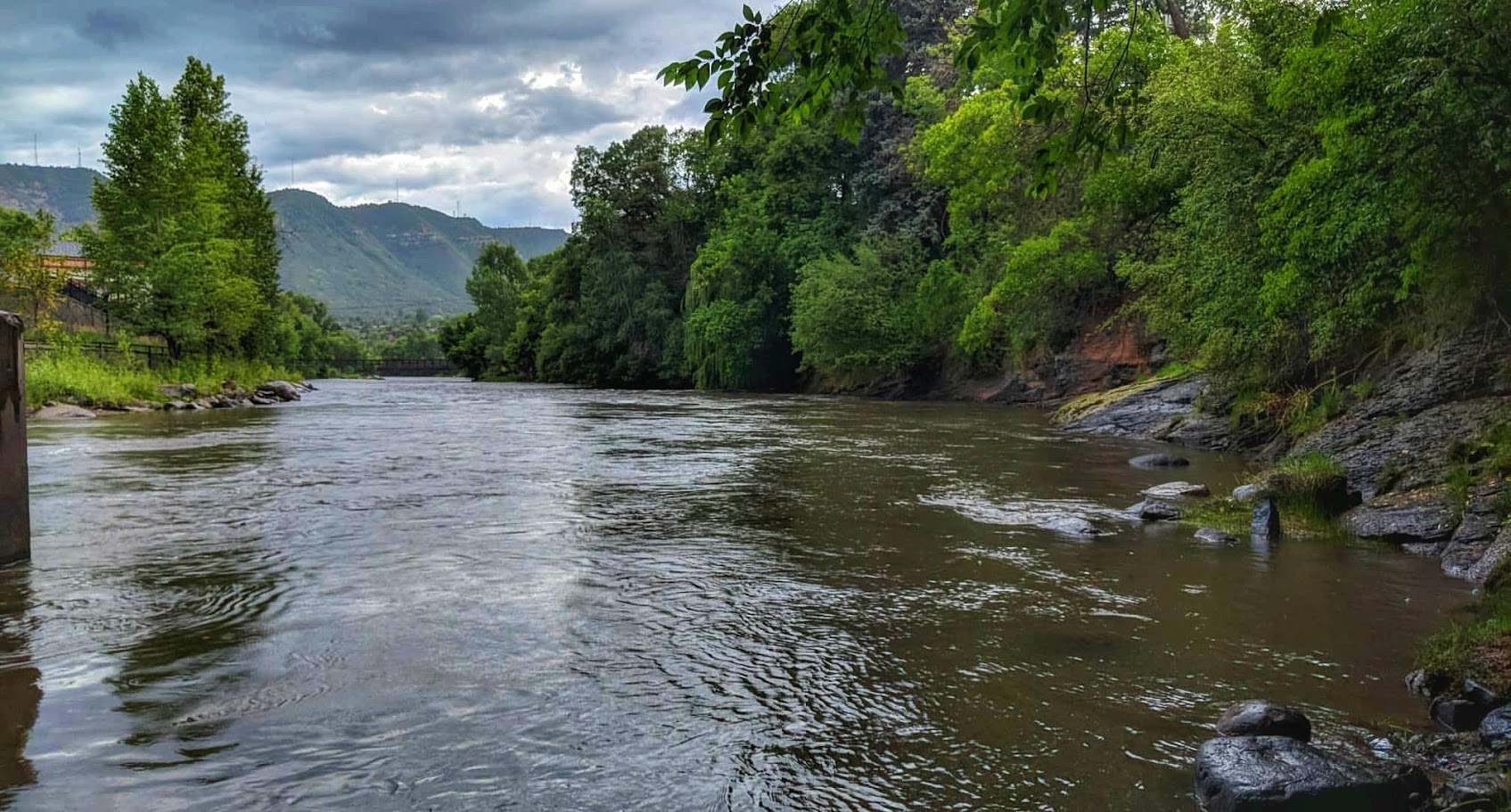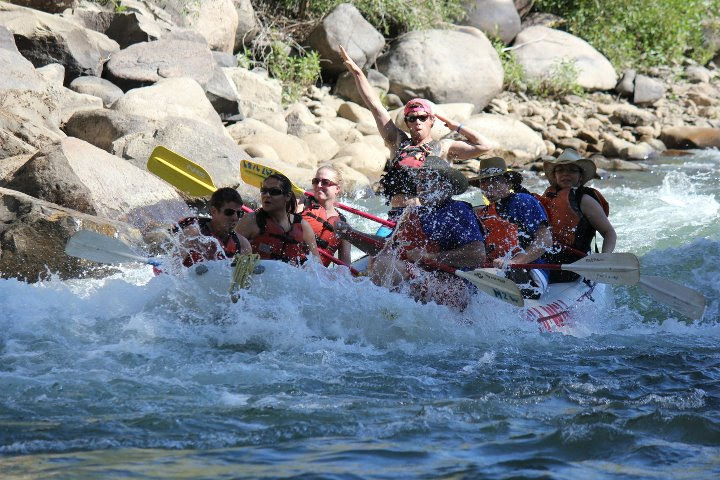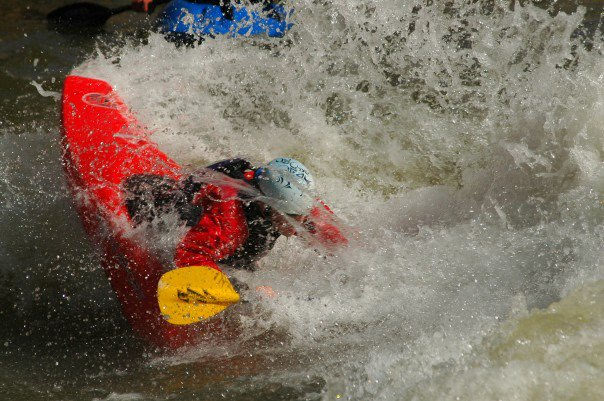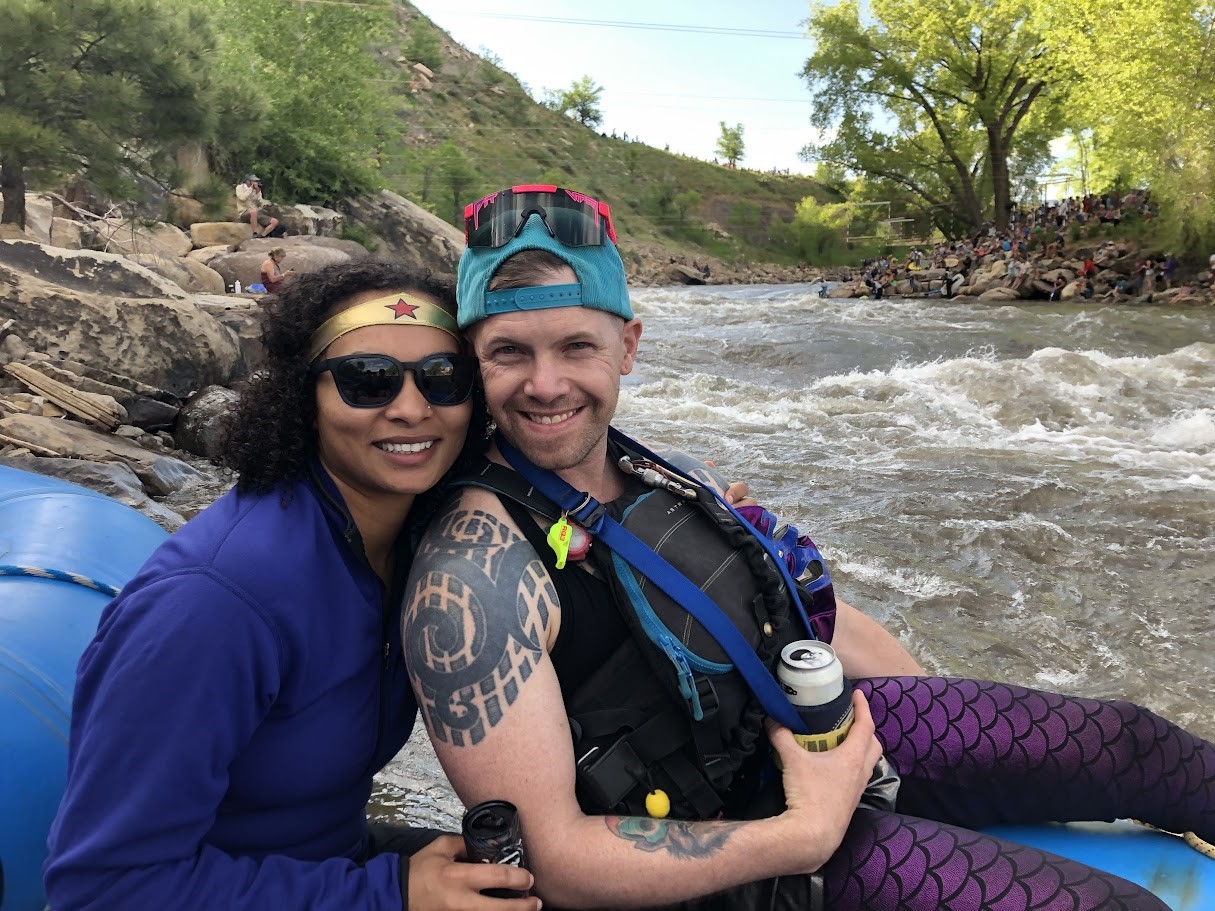Lower Animas
Wild Ride on the Mild Side: Rafting the Lower Animas in Durango, Colorado
Durango, Colorado is a haven for outdoor enthusiasts, and with good reason. Breathtaking scenery, majestic mountains, and rushing rivers provide endless opportunities for adventure. One of the most exhilarating ways to experience Durango's wild side is by rafting the Lower Animas River.
The Lower Animas is a scenic stretch of river perfect for families and those seeking a milder rafting experience. The main rapid feature "Smelter" is a class III at most water levels and it a manmade whitewater park, ranging from splashy to thrilling, provide excitement without the heart-stopping plunges. This section of the river is particularly popular in the spring with higher water flows, making the rapids more lively. However, even in the summer months, when the water levels drop, the rapids remain engaging, although they might be downgraded a bit.
Rafting companies in Durango offer various Lower Animas trips, ranging from half-day adventures to full-day excursions. Most trips launch from the north end of Durango and navigate through a mix of exciting rapids with names like "Smelter," "Sawmill," and "Pinball." In between the thrills, you'll enjoy stretches of calm water where you can soak in the breathtaking scenery of the Animas Valley, spotting wildlife like deer and blue herons along the way.
The Lower Animas rafting experience isn't just about navigating rapids. Many outfitters incorporate historical tidbits about the region and point out remnants of the area's mining past. Some trips even include a stop at a riverside park for a picnic lunch and a chance to cool off with a swim.
The best time to hit the Lower Animas is during spring (May-June) when the snowmelt creates higher water levels and more exciting rapids. However, the river remains fun through summer, with slightly tamer rapids but still plenty of thrills.
When choosing an outfitter, consider factors like experience, trip duration, and the type of raft you prefer. Most companies provide all the necessary gear, including life jackets, paddles, and wetsuits (recommended for spring trips).
Quick Facts
- Section Length: ~10 miles (depends on put-in, take out)
- Diffculty: II-III
- Typical Season: Late May-Mid August
- Typical Peak: Late May-Early June
- My ideal water flows: 1500-6000 CFS at the Durango Gauge
Notable Rapids
- Smelter
- Santa Rita
A Timeless Flow: A History of the Lower Animas River
The Lower Animas River, a vibrant artery coursing through the heart of Durango, Colorado, boasts a rich history interwoven with the lives of indigenous peoples, miners, and conservationists.
Indigenous Stewards: Archaeological evidence suggests the Lower Animas was a vital water source for Ancestral Puebloan communities as far back as 1,000 years ago [1]. Research indicates these populations thrived along the river, potentially exceeding modern-day Durango in size [1].
Ute Legacy: The Southern Ute, Ute Mountain Ute, and Navajo tribes all claim the Animas River as part of their ancestral lands. The river sustained their way of life, providing water for irrigation, fishing, and spiritual ceremonies.
A Catalyst for Change: The late 19th century saw a surge in mining activity in the San Juans. The Animas played a crucial role, transporting ore and powering mills. However, this era also saw the river become polluted with mining waste, negatively impacting its ecosystem [1].
Protecting the Jewel: The 20th century witnessed a growing awareness of the need to protect the Animas. The creation of Mesa Verde National Park in 1906 and subsequent environmental regulations helped curb mining impacts.
Modern Challenges: Today, the Lower Animas faces new challenges. Development, water usage demands, and regional drought threaten the river's health. However, a dedicated community works tirelessly to ensure its preservation for future generations [1].
Sources
- [1]:San Juan Citizens Alliance: https://www.sanjuancitizens.org/animas-river
Unveiling the Earth's Story: The Geology of the Lower Animas
The Lower Animas River carves its path through a landscape sculpted by millions of years of geologic activity. Understanding the rocks beneath the churning rapids sheds light on the dramatic formation of this iconic waterway.
The bedrock underlying the Lower Animas primarily consists of sedimentary formations deposited millions of years ago. One key player is the McDermott Formation, a Late Cretaceous deposit composed of reddish-brown breccia, conglomerate, and sandstone [National Geologic Map Database - Animas Formation, USGS]. This formation likely resulted from early volcanic activity and erosion [1].
Resting atop the McDermott Formation lies the namesake Animas Formation. This formation, also dating back to the Late Cretaceous period, is comprised of interbedded shale, sandstone, and conglomerate layers [1]. The Animas Formation varies in thickness, reaching up to 1,840 feet in some areas [1]. The presence of these sedimentary rocks highlights a period of ancient seas and rivers that once dominated the region.
The majestic landscape we see today is the product of powerful geologic forces. Uplift associated with the Laramide orogeny, a mountain-building event that occurred roughly 70 to 30 million years ago, played a significant role [2]. This uplift tilted and deformed the sedimentary layers, creating the foundation for the modern San Juan Mountains.
The relentless flow of the Animas River itself has been a major sculptor of the landscape. Over millennia, the river has carved its path through the bedrock, forming the canyons and valleys we see today. Evidence of this ongoing process can be seen in the exposed rock formations lining the riverbanks.
The Lower Animas also boasts younger geologic features. Surficial deposits, such as sand, gravel, and cobbles, have been transported and deposited by the river over time [2]. These deposits provide valuable insights into past river behavior and flood events.
Sources
- [1]:National Geologic Map Database - Animas Formation: https://ngmdb.usgs.gov/
- [2]:Surficial geologic maps along the riparian zone of the Animas River and its headwater tributaries, Silverton to Durango, Colorado, with upper Animas River watershed gradient profiles: https://waterdata.usgs.gov/monitoring-location/09361500/
Trips Run: Guiding for Mild to Wild and a whole lot of private trips
The Lower Animas is our local town stretch that runs right through Durango, Colorado. We run this section all summer long, multiple times a week. Back when I was guiding this was the trip that sells the most seats and is a favorite for tourists visiting the area.
While the town section can get spicy at water levels above 2000 cfs, the majority of the section is class II with the whitewater park being class III until levels drop below 1000 cfs. IF you are new to rafting this section is a great place to start learning, but don't be fooled, Smelter has flipped plenty of boats!
Personally when we do laps in town on the raft or in the kayak, I like to put in at 32nd Street and take out at High Bridge as this allows plenty of time on the water and a chance to run through the waterwater park.
If you are in town during early June/Late May don't miss the Animas River Days, the boat parade is something to watch!
2008-Present Commerical Guiding
Since this is the most popular and high-demand trip every guide that works at a company here is Durango rafts the Lower Animas a lot. Over the years that I was guiding I had rafted this section somewhere in the thousands of times, so talking seasons and specifics here is pointless as they all run together.
1992-Present Private Trips
I learned how to kayak at the age of ten, and this was the first river I learned on. I've paddled, rowed, tubed, and swam (intentionally and unintentionally) in this river for my entire life.
Current Flow at Durango, CO
River Map
